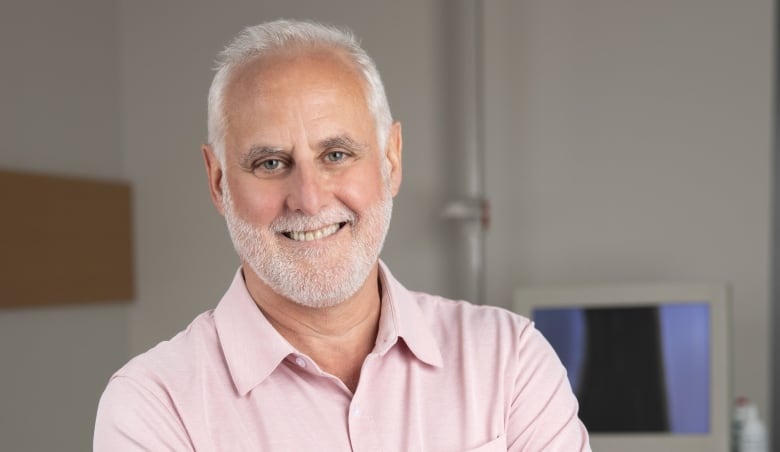A global shortage of a drug used for Type 2 diabetes is being felt in the N.W.T. and could disproportionately affect Indigenous people.
Ozempic has been in short supply in the N.W.T. since the early fall, with pharmacists scrambling to keep enough supply to serve existing patients. Novo Nordisk, the company that produces the drug, has told Health Canada the shortage will continue until March 2024.
The drug, administered through a weekly injection, has become increasingly popular for treatment of Type 2 diabetes, but the shortage has been exacerbated by its off-label popularity as a weight-loss drug.
“It’s certainly going to affect [N.W.T.] disproportionately,” said territorial medical director Dr. Claudia Kraft of the shortage.
Kraft says the use of Ozempic is higher in the N.W.T. than in other jurisdictions in Canada.
“We have higher rates of diabetes, which is what you would expect in Canada today in a population that’s just over 50 per cent Indigenous,” she said.

About five per cent of the general population in Canada has diabetes.
That number is two to three times higher in Métis and First Nations populations, both on and off reserve.
Scrambling for supply
Pharmacists in the territory told CBC News earlier this fall they’ve seen a drastic increase in prescriptions for the drug over the past year. In October, one pharmacist said they were dispensing 10 times more Ozempic per month than they were a year ago.
To deal with the shortage, pharmacists said they are prioritizing diabetic patients already on the drug, and using waiting lists and rationing. In some cases, patients have also had to call around to pharmacies to find supply.
Kraft says the territorial health authority has asked doctors not to put new patients on Ozempic, or other drugs in the same class, to ensure patients already on these drugs have a steady supply.

The guidance suggests prescribing an alternative medication in the same class as Ozempic for those already on the drug, but warns there may soon be shortages of those drugs too, because other jurisdictions are resorting to the same measures.
Popular because it can prevent deadly complications
Dr. Stewart Harris is the diabetes chair at the University of Western Ontario’s medical school. He’s worked with remote Indigenous communities, with a special focus on barriers to care and access to treatment.
Harris said Ozempic is popular — even more than other drugs in the same class — because it’s effective.
He says there are patients who cannot tolerate the gastrointestinal side effects and he wouldn’t recommend it for patients with eating disorders. However, for those who can take it, Harris said there’s good evidence the drug can prevent the “slow and silent” but deadly complications of diabetes.

Harris says that’s especially important for Indigenous diabetics who are more likely to develop complications at a younger age, especially kidney disease.
It’s well-documented that Ozempic improves blood sugar control, Harris said, which reduces the risk of diabetic complications, including blindness and amputations.
Harris says clinical trials also show the drug is protective against heart attacks and stroke, the main causes of death in diabetics.
“The evidence is really strong for this,” said Harris. “Even if people have well-controlled diabetes it is still recommended because of that protectiveness.”
Lyle Daniels is a Type 2 diabetic who has been using Ozempic for about 10 months. He sits on the board for the National Aboriginal Diabetes Association and lives in Edmonton.
Daniels says when he was first diagnosed in 2008, he wore a size 3XL and worked to get his blood sugars under control by eating less, eating healthier and being more active.

He says switching to Ozempic helped get him off other drugs and close to normal ha1c levels — the main test doctors use to gauge how well a diabetic’s blood sugars are controlled.
“So when I do my blood work my doctor likes seeing me — ‘Lyle your cholesterol is perfect. All your numbers that I get on your blood work are within range.'”
Barriers to access
Kraft says she knows it must be frustrating for diabetic patients worried about not getting a medication that’s been working for them.
She thinks there is a risk some patients — Indigenous or otherwise — may stop using Ozempic, and not access an alternative.
“I want to encourage people to have these conversations with their primary care provider, sooner rather than later, so there’s an opportunity to come up with a plan for an alternative,” Kraft said.
Harris said diabetics in Indigenous communities, where there can be a high turnover of medical practitioners, already face barriers to care and access to effective treatments.
“We hate to see patients go off the medication even for a short period of time,” Harris said.
He suggests Indigenous communities negotiate with their supplying pharmacies to have some sort of stabilised supply.
‘Leave the Ozempic for the diabetics’
Like many diabetics across the country, Lyle Daniels is calling for people to “leave the Ozempic for the diabetics.”
He knows many people using it for weight loss also want to get healthy, but he feels like many of those people have other alternatives.
“If I was going to suggest anything to everybody in this world — get prescribed to some of these other drugs.”
Daniels said he goes into Indigenous communities and sees that diabetes is now multigenerational.
He says it’s harder for people in remote communities and on reserves to manage their blood sugars in other ways because fresh healthy food is expensive, while junk food is cheap.
Daniels is especially concerned that Indigenous people are facing another barrier accessing a tool that could help them feel like he does now: Hopeful for a future free of complications from diabetes.

